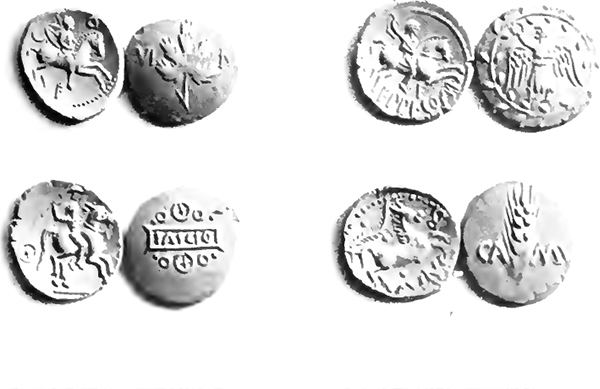<![CDATA[26 ancient gold and silver coins minted by the Corieltauvi tribe, were discovered by archaeologists digging through the Reynard's Kitchen Cave in central Britain. The Corieltauvi tribe were a group of people that made Britain their habitat before the Romans invaded. Reynard's Kitchen Cave, however, is located in a section of Britain where experts believed the tribe did not take residence. It is the first time that coins like these were found in Britain buried in a cave, as coins like these are usually found in fields. Of the 26 coins found, three were Roman coins that pre-dated the invasion of Britain in 43 AD, 20 others were from the Late Iron Age thought to have belonged to the Corieltauvi tribe, and the remaining three were thought to have come from a later era. Certain members of the archaeology team that found the coins believe that these coins belonged to a member of the tribe that lived beyond the boundary that was associated with the tribe's territory. The person may have been more of a lone wolf, if you will. This person may have also been wealthy, as the coins found suggests that the only persons who owned these types of coins were wealthy and powerful individuals. Experts say that it is not entirely sure what these coins were used for, but say it is unlikely that they were used as money. In those days, coins were a status statement, more like cars, clothes and houses today. Wealthy tribe members would have these coins to show how powerful they were, not necessarily to conduct daily commerce. The three Roman coins discovered are thought to have been given out as gifts to other members of the tribe, since they predated the Roman invasion. Over 10 years ago, in the year 2000, the largest collection of Iron Age gold and silver coins was found near Hallaton in south-east Leicestershire. Over 5000 Corieltauvi coins were discovered then, and this recent finding has cemented the idea that members of the ancient tribe were coin collectors. Speculation from the team is that these coins were hidden to ensure that they weren't stolen, and whoever buried them wanted to return to the burial site at a later date to retrieve them. In those times it was common to have coins being collected from earlier time periods, like today where coins from earlier decades are still in circulation. The coins were first discovered by a climber who was seeking shelter in the cave. He found four and brought them to the authorities, where a full-scale excavation was put on by the National Trust and Operation Nightingale, which is a group of ex-military members who use archaeology to help them recuperate. The value of the coins is thought to be valued at around US$ 3,400, and will be put up for display later this year at the Buxton Museum in Derbyshire. ]]>
Ancient Coins Found in British Cave
